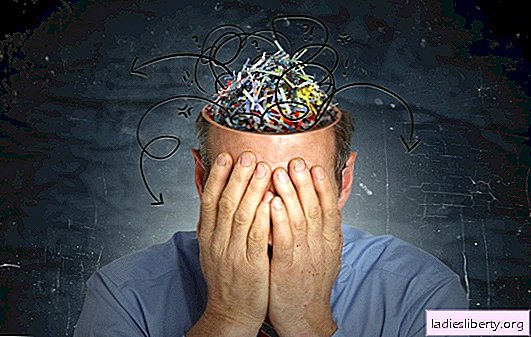
Every year, the penalties for drunk driving are getting tougher.
If earlier it was possible to get a large fine, then today they can also take away the rights.
To prevent this from happening, let's figure out how long it takes to drive a vehicle after drinking alcohol.
After how much you can drive after drinking: definition of a problem
Not all drivers can determine when alcohol will be finally removed from the body. It is with this that a huge number of lost rights are connected, since alcohol was still present in the blood at the time of the test with a breathalyzer. If 10-15 years ago the permissible level of alcohol in the blood was 0.5 ppm, then today it should not be above zero.
In fact, determining the exact timing of the removal of alcohol from the blood is quite difficult, since everything here depends primarily on the body weight of the person, as well as the strength of the drink itself. The toxic effect of alcohol can be determined not only by its high concentration in the blood, but also by the growth rate, that is, the rate of its absorption through the mucous membrane. This speed is determined not only by the general condition of the body, but also by other factors, such as weather, an empty stomach, poor mood, and so on.
In addition, it can increase if, along with alcohol, carbon dioxide enters the body (for example, vodka washed with beer). In this case, intoxication occurs several times faster.
As already mentioned above, it is impossible to determine the exact norms for alcohol intake for all people, since even for the same person these indicators can be different.
On average, these numbers look like this:
50 ml of vodka - the maximum threshold in the blood occurs after 30 minutes;
100-150 ml - 60 minutes;
200 ml - 90 minutes.
There are tools that can help speed up the oxidative process of alcohol in the body, for example, intravenous administration of a 10% solution of fructose (or the use of about 120 g of fructose powder).
The effect of alcohol on the reaction
0.2-0.5 ppm - it is difficult to determine at what speed light sources and their dimensions move;
0.5-0.8 - the eyes do not react so sharply to various types of lighting, red is more difficult to perceive;
0.8-1 - the driver’s angle of view begins to narrow, and he no longer notices what is happening on the sides;
a dose of more than 1.2 ppm most often leads to the fact that the driver loses all the ability to drive a vehicle.
a dose of 4-5 is officially recognized as lethal.
Alcohol driving and law
We will not repeat once again about the dangers of drinking. But when a person in a “cheerful” mood sits behind the wheel, this indicates his complete irresponsibility, since in addition to harming his own body, he also puts the health of other road users at risk.
On a note. People who continue to be too presumptuous and think that nothing will happen to them need to remember that every year about 25 thousand people die, as well as almost 300 thousand people, in Russia. gets injuries of varying severity. These figures have been holding for the past 3 years and are almost not declining.
For this reason, according to the Code of Administrative Offenses, if a driver is driving while intoxicated, he may suffer very serious punishments:
Fine 30 thousand rubles .;
The ban on driving for 1.5-2 years;
Evacuation of the car to the penalty area.
The law is quite strict, and it often turns out that even people who drank just one bottle of beer should be punished the same way as drivers who literally barely stand on their feet.
The latest amendments to the law on road safety say such a maximum of alcohol while driving in ppm:
0.16 in exhaled air;
0.3 in the blood.
How, after all, is it possible to calculate the time when the alcohol has completely disappeared, and you can safely drive your car?
After how much you can drive after drinking: alcoholics ↑
To calculate the number of units of pure alcohol that you already took in during a celebration or just a friendly meeting, you need to calculate the following simple formula:
- % (strength) * (volume) ml / 1000.
On a note. The strength of alcohol should be considered in volume percent (abbr.% Vol.), Or popularly "degrees". Thus, 1 unit = 10 ml = 8 g of pure alcohol - this is the volume of alcohol that can split an adult's body in 1 hour (time is very arbitrary, since each organism has its own distinctive features).
For example:
0.5 vodka (40% vol.) - this is 20 units. pure alcohol;
1 liter of semi-dry red wine (11.5% vol.) - 11.5 units;
300 ml of kvass (2.2% vol.) - 0.66 units.
After how much you can drive after drinking alcohol: we control the amount of alcohol drunk taking into account the individual characteristics of the body
In order to determine the amount of alcohol during exhalation before you drive, there are 2 ways:
1) breathalyzer;
2) the sobriety control tube.
A real breathalyzer, which is used by the traffic police, is so much quite expensive - in the region of 20-40 thousand rubles. It shows fairly accurate data, the error in this case is only a few percent, which are within normal limits. A personal breathalyzer is much worse, it gives an error of up to 25%, and it can be used only 1 time per day.
The tubes can be bought individually, but they also do not differ in good accuracy.
Important! The breathalyzer analyzes the exhaled air. There are times when alcohol can be detected in the air, but not in the blood. When rinsing the mouth with vodka or medicine containing alcohol, in the air on the exhale it will be kept for about 15-20 minutes.
On intoxication, as well as sobering up of a person, a great influence is exerted by various individual characteristics of the body, which include:
weight;
floor;
equipment;
metabolic rate;
frequency of alcohol consumption and so on.
It is almost impossible to calculate the exact amount of alcohol even for the same person, since on different days the breakdown of its products can take completely different times.
The time of sobering up of the body also greatly depends on the type and volume of the drink. For example, beer will quickly begin to be removed from the blood, much faster than vodka or wine. Recent drinks have approximately the same elimination time.
The presence of snacks can have a big impact on the sobering process. It's no secret that you can get drunk on an empty stomach much faster than on a full one. Accordingly, sobriety itself with an empty stomach will come somewhat faster, since the alcohol in it will not stagnate, but will quickly pass into the intestines, be absorbed into the bloodstream and excreted.
No matter how great the temptation, it is still better not to take risks and drive sober, perhaps this will save you and your loved ones from troubles on the road.
Stay alert on the road!











